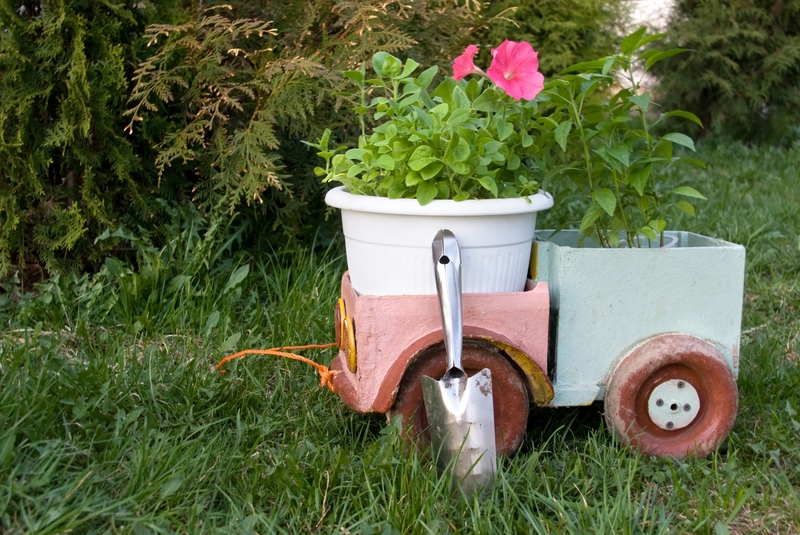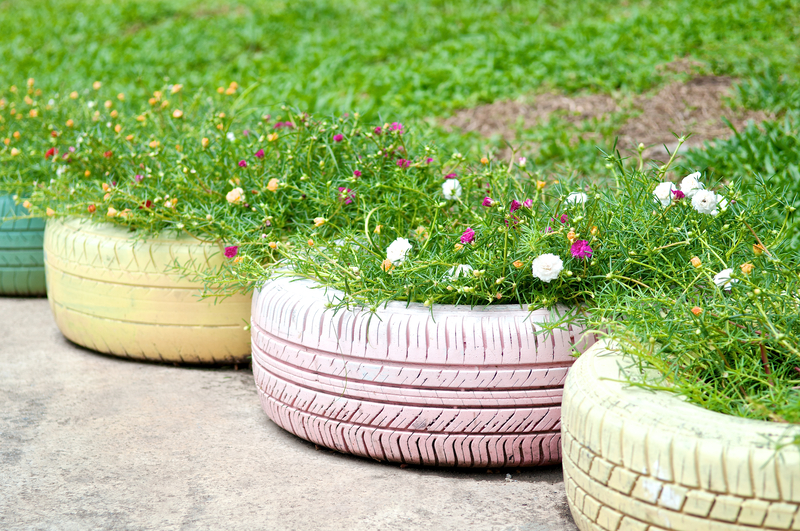Why Recycling Your Pots and Pans Matters for the Environment
In our fast-paced, consumer-driven world, household items often reach the end of their lifespan before we have a chance to consider what comes next. One category that's commonly overlooked is old cookware--specifically, pots and pans. Rather than sending them straight to landfill, recycling your pots and pans is a critical step in protecting our planet. This article explores the far-reaching impact of recycling old cookware, how the process works, and actionable steps you can take to embrace more sustainable cooking habits.

The Environmental Impact of Discarding Pots and Pans
Pots and pans, made primarily from metals such as aluminum, stainless steel, copper, and cast iron, are everyday kitchen essentials. When they become worn out, scratched, or unusable, many people unknowingly toss them into the trash. Why is this harmful?
1. Landfill Overload
- Metals Do Not Biodegrade: Unlike organic materials, metals can persist in landfills for hundreds--even thousands--of years without breaking down.
- Toxic Leachates: Old nonstick coatings, especially those containing PFOA or PTFE, can eventually break down and leach chemicals into surrounding soil and water sources, harming ecosystems.
- Space Concerns: Bulky cookware takes up valuable space in landfills that are already under pressure from increasing waste production worldwide.
2. Loss of Valuable Resources
Metals are finite resources, requiring extensive mining and energy consumption to obtain and process.
- Aluminum and stainless steel are among the most recycled materials globally; discarding cookware wastes resources that could be put back into the manufacturing cycle.
- Recycling old pots and pans reduces the demand for raw ore extraction, diminishing environmental damage from mining.
- Preserving natural resources ensures that future generations also have access to these essential materials.
3. Greenhouse Gas Emissions
Manufacturing new cookware from virgin materials carries a steep carbon footprint:
- Refining and fabricating metals use vast amounts of energy, much of which comes from fossil fuels.
- By recycling your pots and pans, you dramatically decrease the energy required to produce new cookware, cutting greenhouse gas emissions significantly.
How Does Cookware Recycling Work?
Step 1: Material Identification
Most pots and pans are constructed from materials that can be recycled--aluminum, stainless steel, copper, or cast iron. However, nonstick coatings and plastic handles complicate the process.
- Some municipalities accept only metal pots and pans with coatings removed.
- It may be necessary to detach plastic handles or bring items to specialized recycling centers.
Step 2: Local Recycling Guidelines
Simply placing pots and pans in your curbside recycling bin may not be sufficient. Here's what you should do:
- Consult your city or county waste management website for specific directions on recycling cookware.
- Find out if there are designated drop-off spots or Scrap Metal days in your area.
- For cookware with nonstick coatings, ask if additional preparation is needed beforehand.
Step 3: The Recycling Process
If your cookware is sent to a metal recycler, this is what usually happens:
- Cookware is sorted by metal type.
- Contaminants like plastic handles or residual food are removed.
- The metal is then melted down and purified.
- It is formed into new metal sheets or ingots, destined for new products--possibly even new pots and pans!
Benefits of Recycling Pots and Pans
1. Conservation of Natural Resources
When you recycle cookware, you're not just diverting waste from landfills but also helping the planet in profound ways:
- Recycled metals require fewer raw materials to extract, leaving more untouched landscapes and preserving biodiversity.
- It takes 95% less energy to make a product from recycled aluminum than from new bauxite ore!
2. Reduction in Pollution
Recycling your old pots and pans helps keep land, air, and water clean:
- Less mining means lower risk of chemical run-off and habitat destruction.
- Properly recycled nonstick pans prevent hazardous PFOA from seeping into the environment.
- Decreasing landfill input helps limit methane emissions and groundwater pollution.
3. Supporting the Circular Economy
A circular economy keeps materials circulating as long as possible, creating jobs and preserving value:
- When we recycle our pots and pans, we encourage manufacturers to favor recycled materials, reducing reliance on new mineral extraction.
- Recycling industries generate employment and foster sustainable economic growth within communities.
What Can Be Recycled? Types of Cookware
1. Metal Cookware
- Stainless steel: Highly recyclable, commonly accepted by scrap metal facilities.
- Aluminum: Another top candidate; foil, light cookware, and pan bodies can be recycled if clean of food and free from plastics.
- Copper and Brass: These premium metals are valuable and often accepted at specialized recycling centers.
- Cast iron: Bulky and dense, cast iron saucepans and skillets are sought after by scrap yards.
2. Nonstick and Coated Cookware
- Nonstick surfaces, like Teflon and ceramic, may require specialized recycling programs or removal of the coating before recycling.
- Check with local facilities regarding their acceptance of these materials--some may only take them if the coating is stripped.
3. Glass and Ceramic Cookware
- Baking dishes, Pyrex, and ceramic pots usually cannot be processed in standard glass recycling due to different melting points.
- Some upcycling or reuse centers may accept them, or they can be creatively repurposed at home.
Alternative Ways to Recycle or Reuse Your Pots and Pans
1. Donate Usable Cookware
- If your pots and pans aren't damaged beyond repair, consider donating them to thrift stores, shelters, or community groups.
- Many organizations are grateful for gently used kitchenware, extending the life of your items and reducing waste.
2. Upcycle Into New Household Items
- Old pots make excellent planters for flowers, herbs, or small trees--a creative touch for balconies or gardens.
- Large pans or woks can be transformed into quirky bird baths or storage organizers.
- Artisans sometimes use metal cookware for sculptures or rustic home decor.
3. Take-Back Programs
- Some cookware brands and retailers now offer take-back or trade-in programs for used pots and pans.
- Returned items are responsibly recycled or refurbished--search for local initiatives or contact your cookware's manufacturer.
Tips for Sustainable Cookware Choices
As you transition toward better environmental stewardship, rethinking your future cookware purchases helps close the loop.
- Choose Long-Lasting Materials: Invest in high-quality, durable pots and pans (such as stainless steel or cast iron) that last decades.
- Avoid Toxic Coatings: Look for eco-friendly coatings or uncoated options to minimize chemical risks.
- Buy Recycled: Support brands that use recycled metals in their cookware lines.
- Maintain Properly: Regular cleaning and proper maintenance prolong lifespan, preventing premature disposal.
How to Find Cookware Recycling Options Near You
1. Online Resources
- Websites such as Earth911.com or RecycleNow.com can help you locate nearby recycling centers that accept metal cookware.
- Contact your municipal waste management office for local recycling initiatives and collection schedules.
2. Appliance and Scrap Metal Yards
- Scrap yards often accept a wide range of metals; call ahead to verify requirements.
- Some may pay you for desirable metals like aluminum, copper, or brass.
3. Retailer and Brand Initiatives
- Brands including Le Creuset, GreenPan, and others have started take-back schemes for end-of-life cookware.
- Retailers like Best Buy or certain home improvement stores sometimes offer recycling events--check with customer service.
Frequently Asked Questions
Can nonstick pans be recycled?
Some nonstick pans can be recycled, but the coating must usually be removed first. Always consult your local recycler's guidelines.
Are handles and knobs recyclable?
If your pots and pans have plastic, wood, or silicone handles, separate them if possible. These materials often cannot be recycled with the metal body and may need to be disposed of separately.
Is it safe to use heavily scratched nonstick pans?
Once nonstick cookware becomes scratched or chipped, it may release harmful chemicals or metals into food. At this stage, recycling is the most responsible option.
Why can't ceramic bakeware be recycled with glass jars?
Bakeware such as Pyrex is formulated to withstand high temperatures and has a different melting point than container glass. Mixing them disrupts the recycling process and can contaminate the batch.

Key Takeaways: The Importance of Recycling Cookware
- Recycling pots and pans is critical for environmental preservation--it conserves natural resources, prevents pollution, and cuts carbon emissions.
- Discarded cookware should never end up in landfills: it takes up space and may leach hazardous substances.
- With a little effort, old pots and pans can be recycled, donated, or upcycled into valuable new products or creative household items.
- Always, check your local recycling guidelines to ensure your cookware is handled responsibly.
Conclusion: Every Pan Counts for a Greener Planet
Recycling your pots and pans isn't just about decluttering your kitchen--it's about making thoughtful choices that ripple through the environment. Every recycled item means fewer resources extracted, less energy consumed, and cleaner air and water for generations to come. By taking simple steps to recycle old cookware--or even choosing to donate or upcycle it--you're actively part of the solution against waste and pollution.
So, the next time your cookware has cooked its last meal, remember: recycling your pots and pans is a powerful act for the environment. Let's keep our resources in circulation and our planet thriving--one pan at a time!